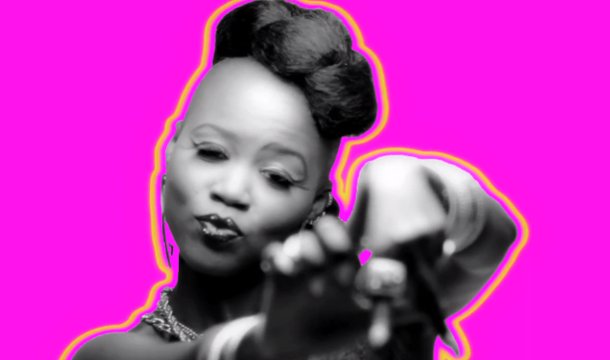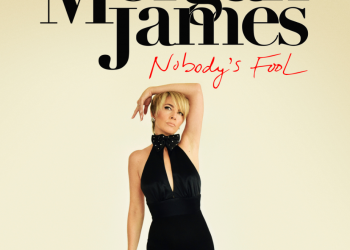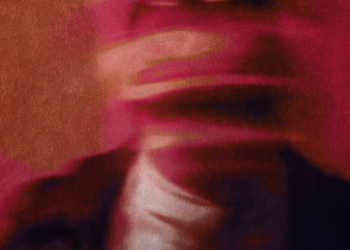V first received national exposure as the co-writer and featured artist on Timothy Bloom's "Til the End of Time." The South Central, Los Angeles native defined the vision of her forthcoming record insisting, "A Visitor is someone that changes the "normal" order of things. You will feel their presence whenever they enter the atmosphere."
She continues: "A Visitor moves on their own vibration and frequency. A Visitor is forever evolving, always moving constantly to experience and attain supernatural highs that only God and the Universe can give. The Visitor is not a person place or thing. Its an action, an Idea, a powerful moving force. The Visitor=V."
“V – Poison Music” is a powerful and often misunderstood genre of music. Its unique soundscape, combined with its raw lyrics, has been captivating listeners since the early 2000s. Despite the controversy that surrounds it, V-Poison Music continues to be an influential force in popular culture today.
This article will explore the history and cultural significance of this genre, as well as its impact on society both now and in the future. It’ll look at some of the most famous artists who have contributed to its development, from underground producers to mainstream superstars. We’ll also delve into how people are responding to this type of music, what messages it sends out about our current times, and where we might expect it to go in the coming years.
So come along for a journey through V – Poison Music: from its humble beginnings to its unpredictable horizon! Whether you’re already a fan or just curious about this daring genre, there’s something here for everyone looking to broaden their musical horizons.
History Of V Poison Music
V Poison Music has a long and varied history. It began in the early 20th century, when traditional instruments like violins were used to create music that was meant to evoke feelings of despair, melancholy, and even death. Over time, V Poison evolved into an entire genre with its own unique elements and sounds. The most famous example is found in the works of composer Alban Berg. His compositions often featured dissonant chords and abrupt changes in tempo – all of which made for an uneasy listening experience that reflected the turmoil of his times.
The influence of V Poison spread throughout Europe during the 1930s and 40s. Musicians from many different genres adopted elements from this style for their own work, including jazz legend Duke Ellington who incorporated it into some of his more avant-garde pieces. By the 1950s, it had become popular enough to be embraced by mainstream audiences as well.
Today, V Poison continues to be influential in both classical and contemporary music styles. It can be heard everywhere from movie soundtracks to opera performances, showing just how much reach this once niche genre now enjoys.
Influence Of V Poison Music
V Poison Music has had a profound influence on music over the past century. Its dark and often unsettling tones have inspired artists across different genres to explore new sounds and ideas, creating works of art that are both powerful and nuanced. From jazz greats like Duke Ellington to modern-day composers, V Poison’s legacy lives on in many different forms.
The lasting impact of this genre can be seen not only in its musical innovations but also in its ability to evoke strong emotions through sound. By highlighting themes of despair and tragedy, it encourages listeners to reflect upon their own experiences while providing them with solace at the same time. This duality is one of the main reasons why V Poison remains so influential today – even if many people don’t realize they’re being exposed to it.
At its core, V Poison Music provides an outlet for expressing sorrow without having to resort to words or images. While other styles may come and go, this unique form of expression will always remain timeless – no matter how much society changes around us.
Conclusion
I. Summary of V Poison Music
V Poison Music is a genre of music that has its roots in punk and post-punk rock, as well as elements from the hardcore scene. It’s been around since the early ’90s with bands such as Sonic Youth, Quicksand, and Jawbox helping to define what would later be known as v poison music. The sound consists of distorted guitars, angular riffs and urgent vocals that often come off more like spoken word than singing.
II. Influence of V Poison Music
The influence of v poison music can still be heard today in many different forms of alternative rock music. Bands like Pavement, Sleater-Kinney and Fugazi have all embraced this style at some point during their careers, while other artists including Nirvana, Green Day and Blink 182 have incorporated aspects of it into their sound. Even modern acts like Death Cab for Cutie and Paramore have drawn inspiration from v poison music’s unique blend of melody and aggression.
III. Conclusion
Overall, there is no denying the impact that v poison music has had on modern day alternative rock. Its raw energy and DIY attitude continues to inspire new generations of musicians who are looking to make something fresh out of an old school formula. I’m sure we’ll continue to hear echoes of it for years to come in various forms across multiple genres!
Since 2005, Singersroom has been the voice of R&B around the world. Connect with us via social media below.








